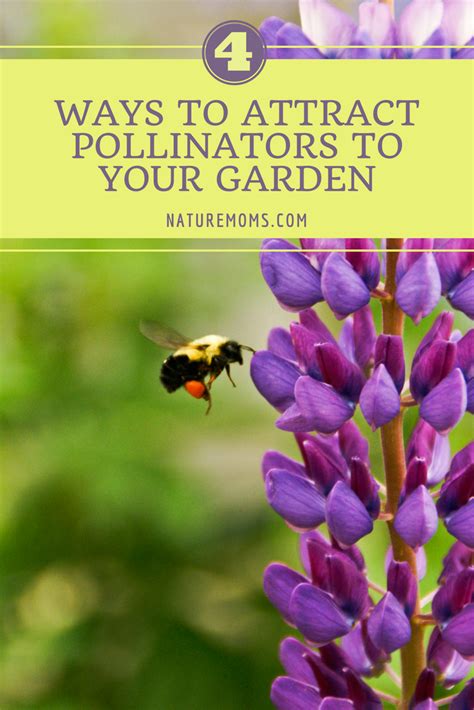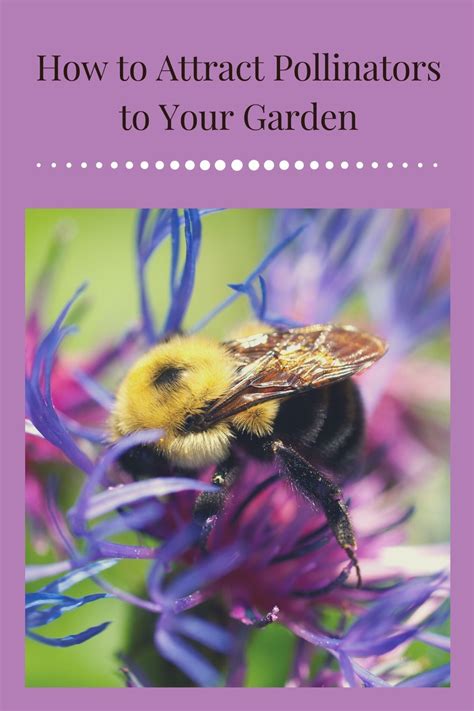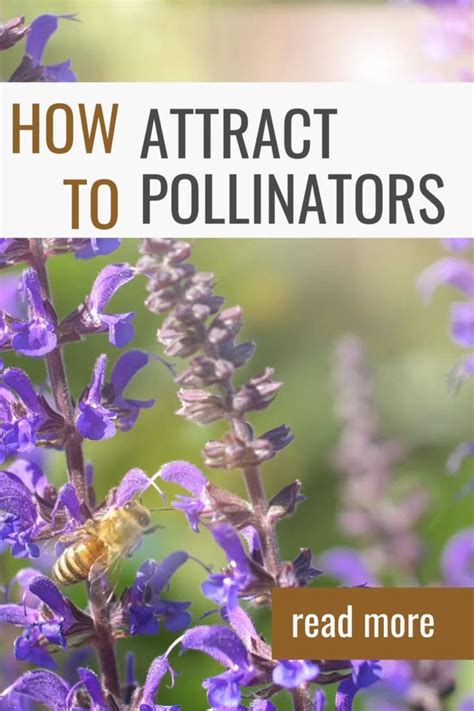A thriving garden is more than just a beautiful space; it’s a vital haven for pollinators that play a crucial role in the ecosystem. Pollinators such as bees, butterflies, and hummingbirds are essential for the reproduction of many plants, ensuring a healthy and productive garden. Attracting these beneficial creatures to your garden not only enhances its vibrancy but also supports biodiversity. In this article, we’ll explore top tips for creating a pollinator-friendly garden, from selecting the right flowers and plants to providing essential resources like water and shelter. By following these guidelines, you can transform your garden into a sanctuary that supports both local wildlife and the environment.
Join shzow.com as we delve deeper into this topic.
1. Importance of Pollinators in the Garden
Pollinators are the unsung heroes of the garden, playing a vital role in the reproduction of flowering plants. These creatures, including bees, butterflies, moths, birds, and even some bats, transfer pollen from one flower to another, enabling plants to produce fruits, seeds, and new plants. Without them, many of the foods we enjoy—fruits, vegetables, nuts, and herbs—would become scarce, leading to a less diverse and less stable food supply.
In addition to their role in food production, pollinators contribute to the overall health of the ecosystem. They help maintain the genetic diversity of plants, which is crucial for resilience against pests, diseases, and climate change. A garden rich in pollinators is a vibrant, thriving ecosystem that supports a wide range of other wildlife, including birds and beneficial insects. Moreover, the presence of pollinators can enhance the aesthetic appeal of a garden, bringing movement, color, and life to the space. By understanding and appreciating the importance of pollinators, gardeners can take steps to create environments that not only attract but also sustain these vital creatures.

2. Choosing the Right Flowers to Attract Pollinators
Selecting the right flowers is essential to attracting a diverse array of pollinators to your garden. Different pollinators are drawn to specific types of flowers based on their color, shape, scent, and the time of year they bloom. Bees, for example, are particularly attracted to blue, purple, and yellow flowers with open or tubular shapes, such as lavender, sunflowers, and coneflowers. Butterflies prefer bright, flat-topped flowers like zinnias, marigolds, and asters that provide a landing platform.
It’s also important to choose flowers that bloom at various times throughout the growing season. Early-blooming plants like crocuses and hellebores provide food for pollinators emerging in spring, while late bloomers such as goldenrods and sedums sustain them through the fall. This continuous supply of nectar and pollen ensures that your garden supports pollinators year-round.
Additionally, consider incorporating heirloom or native plant species, as they often produce more nectar and pollen than hybrid varieties. Native plants are particularly beneficial because they have evolved alongside local pollinators, offering them the food sources they need most. By carefully selecting a diverse range of flowers, you can create a vibrant, pollinator-friendly garden that supports the health and sustainability of both your plants and the broader ecosystem.

3. Creating a Pollinator-Friendly Habitat
Creating a pollinator-friendly habitat goes beyond just planting the right flowers; it involves designing an environment that meets all the needs of pollinators. Start by providing shelter, such as dense shrubs, tall grasses, or a mix of flowering plants that offer protection from predators and harsh weather. Pollinators like bees and butterflies also need safe nesting sites. Leave patches of bare soil for ground-nesting bees, and allow some natural debris like fallen leaves or logs to remain, as they can serve as nesting sites for various insects.
In addition to shelter, ensure your garden has diverse food sources. Incorporate a variety of flowering plants that offer nectar and pollen, and aim for a range of shapes and sizes to accommodate different types of pollinators. Water is another crucial element; shallow dishes filled with water and pebbles, or small ponds, can provide much-needed hydration.
Finally, reduce or eliminate pesticide use. Chemicals can harm pollinators, so opt for natural alternatives and practice integrated pest management to maintain a healthy, balanced ecosystem. By creating a pollinator-friendly habitat, you’ll attract and sustain a diverse population of beneficial insects and other wildlife.

4. Planting Native Plants for Local Pollinators
Planting native plants is one of the most effective ways to attract and support local pollinators. Native plants have evolved alongside the pollinators in your region, creating a mutually beneficial relationship. These plants are naturally suited to the local climate, soil, and ecosystem, making them more resilient and requiring less maintenance compared to non-native species.
Native plants provide the specific nectar, pollen, and habitat that local pollinators need to thrive. For example, many native bees and butterflies have adapted to feed on the nectar of particular native flowers. By incorporating a variety of native species into your garden, you offer a reliable food source that matches the dietary needs of these pollinators.
Moreover, native plants help maintain the ecological balance of your garden. They support not only pollinators but also other beneficial insects, birds, and wildlife, fostering a rich and diverse ecosystem. Examples of native plants that attract pollinators include milkweed for monarch butterflies, purple coneflowers for bees, and goldenrod for a range of pollinators. By choosing native plants, you create a garden that is not only beautiful but also essential for the health of local pollinator populations.
5. Providing Water Sources for Pollinators
Water is a crucial resource for pollinators, yet it’s often overlooked in garden planning. Just like all living creatures, pollinators need water to survive, and providing accessible water sources can significantly enhance your garden’s appeal to these vital insects and animals. A simple and effective way to offer water is by placing shallow dishes filled with water around your garden. Adding pebbles or stones to the dishes creates landing spots, allowing pollinators like bees and butterflies to drink safely without the risk of drowning.
If you have more space, consider installing a small pond or birdbath. Ensure that any water source you provide is kept clean and free from chemicals, as pollutants can harm pollinators. Ponds can also be enhanced with aquatic plants like water lilies, which not only add beauty but also offer additional resting spots for insects.
Another method is to create a mud puddling area, especially for butterflies, which often seek out wet soil for moisture and minerals. Simply dig a shallow depression in the ground, fill it with sand or soil, and keep it damp. By providing various water sources, you cater to the needs of different pollinators, helping to sustain a healthy, vibrant garden ecosystem.
6. Avoiding Pesticides and Using Natural Alternatives
Pesticides, while effective in controlling pests, can be highly detrimental to pollinators. Many chemical pesticides do not discriminate between harmful pests and beneficial insects, leading to the decline of bees, butterflies, and other pollinators essential for a thriving garden. To protect these vital creatures, it’s important to minimize or eliminate the use of chemical pesticides in your garden.
One effective alternative is to adopt natural pest control methods. Companion planting, for example, involves growing certain plants together that naturally repel pests. Marigolds, for instance, can deter aphids, while basil can help keep mosquitoes and flies away. Introducing beneficial insects like ladybugs and predatory wasps can also help control pest populations without harming pollinators.
Neem oil and insecticidal soaps are other natural options that target harmful insects without affecting pollinators when used correctly. These products are derived from natural sources and break down quickly, reducing the risk of long-term harm to the garden ecosystem.
Additionally, maintaining healthy soil through composting and mulching can reduce pest problems by promoting strong plant growth and resilience. By choosing natural alternatives and fostering a balanced ecosystem, you can protect pollinators while keeping your garden healthy and pest-free.
7. Designing a Garden with Blooming Plants Throughout the Seasons
Designing a garden with blooming plants throughout the seasons ensures a continuous food supply for pollinators, supporting their health and activity year-round. To achieve this, plan your garden with a variety of plants that bloom at different times of the year. Start by incorporating early-blooming plants like crocuses, snowdrops, and hellebores that provide essential nectar as pollinators emerge from hibernation in spring.
As the season progresses, add plants that continue to provide blooms, such as lavender, bee balm, and coneflowers, which will keep pollinators well-fed through the summer months. Incorporate late-blooming flowers like asters, sedums, and goldenrods to offer sustenance as the growing season winds down and prepare for the colder months.
Consider using a mix of annuals and perennials to ensure that your garden remains vibrant throughout the year. Annuals like marigolds and zinnias offer vibrant color and attract pollinators quickly, while perennials provide long-term stability and ongoing blooms.
By creating a garden with staggered blooming periods, you not only support a diverse range of pollinators but also enjoy a continuously evolving and beautiful garden space. This approach fosters a healthy ecosystem and ensures that pollinators have the resources they need no matter the season.
8. Incorporating Pollinator-Friendly Trees and Shrubs
Incorporating pollinator-friendly trees and shrubs into your garden adds depth and variety while providing essential resources for pollinators. Trees and shrubs offer not only additional nectar sources but also shelter and nesting sites for various pollinators. When choosing trees and shrubs, select species known for their pollinator appeal.
Trees such as cherry, apple, and crabapple are excellent choices, as their blossoms attract bees and butterflies. Similarly, flowering shrubs like lilacs, butterfly bushes, and viburnums provide ample nectar and pollen for these important insects. These plants often have large, showy flowers that are easy for pollinators to access, ensuring they can find the food they need.
In addition to their floral benefits, trees and shrubs offer important habitat features. Dense shrubs and small trees can provide shelter from harsh weather and protection from predators. For nesting, consider adding species like dogwood or holly, which can offer secure spaces for pollinators to lay eggs or seek refuge.
When planning your garden, place trees and shrubs strategically to create layers and focal points. This not only enhances the visual appeal of your garden but also maximizes the habitat and food resources available to pollinators. By incorporating these elements, you create a more supportive environment for pollinators throughout the year.
9. Building and Installing Bee Hotels and Butterfly Houses
Building and installing bee hotels and butterfly houses are excellent ways to provide essential nesting and resting sites for pollinators. Bee hotels offer a safe place for solitary bees, which are crucial for pollination but do not live in colonies like honeybees. These structures can be made from various materials, such as bamboo tubes, wooden blocks with drilled holes, or bundles of twigs. Position bee hotels in a sunny, sheltered spot to ensure they stay dry and warm.
Butterfly houses serve a similar purpose by providing a place for butterflies to rest and shelter. They typically feature small compartments or slats where butterflies can seek refuge from predators and adverse weather. Position butterfly houses in a sunny, sheltered location to attract butterflies, as they prefer warmth and protection.
Both bee hotels and butterfly houses should be placed in areas that are easily accessible to these pollinators and away from high-traffic areas. Adding these structures to your garden not only enhances its attractiveness but also supports the health and longevity of pollinator populations. By creating these habitats, you contribute to a more sustainable and welcoming environment for bees and butterflies.
10. Educating the Community on the Benefits of Pollinator Gardens
Educating the community about the benefits of pollinator gardens is crucial for fostering wider support and action in creating habitats that benefit these essential creatures. Start by sharing information on how pollinators contribute to the health of ecosystems and food systems. Highlight the role they play in the reproduction of plants, which affects everything from local biodiversity to food production.
Organize workshops, seminars, or garden tours to demonstrate the practical steps involved in establishing and maintaining pollinator-friendly gardens. Provide hands-on activities, such as planting sessions or building bee hotels, to engage participants and give them practical experience.
Utilize local media, social media platforms, and community newsletters to spread awareness about the importance of pollinators. Share success stories and case studies from local gardens that have effectively supported pollinators. Collaborate with schools, gardening clubs, and environmental organizations to integrate pollinator education into their programs.
Encourage community members to take action by creating their own pollinator gardens and participating in local conservation efforts. By raising awareness and providing resources, you can help build a network of pollinator-friendly spaces that enhance local biodiversity and contribute to a healthier environment for everyone.
Creating a pollinator-friendly garden involves thoughtful planning and ongoing care, from selecting the right plants to providing essential resources. By incorporating diverse flowering plants, native species, and habitats like bee hotels, you support these vital creatures and enhance your garden’s beauty. Educating others about these practices can extend the benefits to the wider community.
shzow.com
